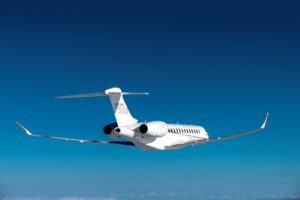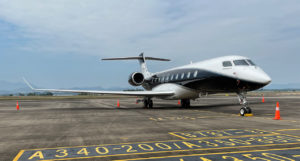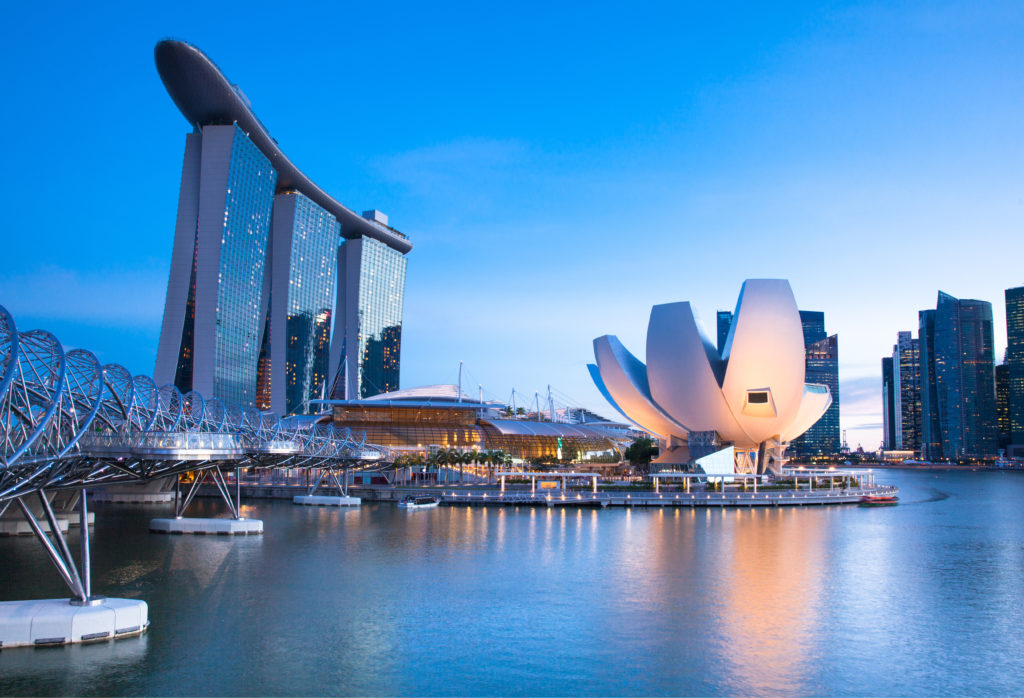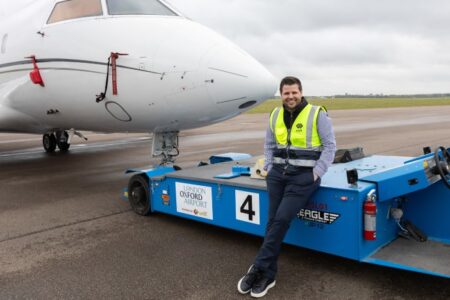At the start of this year China finally opened its borders to the rest of the world. After three years of Covid-19 closure and isolation the aviation sector in neighboring countries in the Asia-Pacific region has had a chance to assess the impact.
“China’s decision to ease its Covid restrictions and reopen its borders to international travel will accelerate business aviation growth across the Asia-Pacific (APAC) region,” says Darren McGoldrick, vice president, Luxaviation Asia-Pacific. “Prior to the pandemic, China was a central hub for private flyers. Routes to and from China from bordering countries, such as Thailand and Vietnam, as well as long-haul destinations, drove significant economic growth for the region.”
In the months since the Covid-19 reopening, business aviation activity in China is 19% ahead of last year and 0.2% behind 2019, according to business aviation data source WINGX.
“Since the reopening of China on February 8, we have already witnessed an increase in international traffic, as well as a growing number of domestic flights within mainland China,” says McGoldrick. “Whilst it is great to see the return of jet demand in APAC, it is also great to have Chinese operators, who have had to pause activities for almost three years emerge from the pandemic.”
This boost in private aviation demand will have an immediate impact on many of the surrounding countries, explains McGoldrick. “Our ExecuJet FBOs in Australia and New Zealand will be managing departures to and welcoming visitors from Chinese operators. Our team is prepared and looking forward to facilitating new and existing clientele, because of China’s reopening.”
“China’s reopening is a good sign for the region and Thailand,” says Yvonne Chan, regional director of
Asia-Pacific at Universal Aviation.
“The most prominent change for the region was the lifting or softening of quarantine measures and border restrictions in Hong Kong and China,” agrees McGoldrick. “The ability to move freely across all areas of the region, including Southeast Asia and Australia, will drive new growth and have a positive influence on the business aviation market here.”
Russia-Ukraine war
Although there are no longer restrictions within China to slow APAC market’s growth, the ongoing disruption in Russia and the Ukraine has been affecting the region and threatens to slow the progress that is being made.
“We have received some direct requests from Russian operators, but now we must decline those requests due to the sanctions,” explains Chan. “This has definitely put a dent in the rebound of the APAC region and Thailand.”
The ongoing crisis in Ukraine is also continuing to impact route planning to and from Asia and Europe, with most operators required to avoid Russian airspace, and flight duration significantly increasing due to rerouting.
“Beyond route planning, the war will continue to impact global oil and energy prices, but the impact this is expected to have on Asia-Pacific is substantially lower than other areas of the world, such as Europe,” explains McGoldrick.
Though the ongoing effects of the pandemic meant 2022 was not a conventional year of business activity, according to McGoldrick the region still experienced a consistent level of demand throughout the year. “Peak months traditionally tend to coincide with holiday periods, or any major events. For example, there was an increase in demand for travel to and from mainland China in early January due to the Lunar New Year celebrations.

“Similar to other regions, the summer period is generally stronger than the winter period, with local tourists visiting places such as Singapore and Thailand, as well as the USA and Europe,” he says.
Across the region, business aviation is growing at different rates. “Up until now,” says McGoldrick, “China has been restricted to domestic operations and strict quarantine measures. Though the pause on international travel has delayed the recovery of business aviation in China, Southeast Asia and Australia have seen solid growth.
“It’s also worth noting that throughout the region, there continues to be a growing population of High-Net-Worth Individuals (HNWI’s) and Ultra-High-Net-Worth Individuals (UHNWI’s). Their preference for private jets and helicopters for personal and business travel, as well as the highly personalized service, has resulted in a greater demand for private jets.”
McGoldrick indicates that charter flying has been a large area of growth over the last few years, despite the challenges of travel. “More recently, we have seen a marked increase in aircraft acquisitions, which has resulted in more aircraft management opportunities for Luxaviation,” he says. “As well as this, the average size of aircraft continues to grow. Part of this growth is due to geographical location. Australian or Southeast Asian owners need ultra-long-range jets if they want to visit Europe and USA.”
Regional considerations
When flying to Asia-Pacific there are several things to consider. Chan highlights that it is vital that visitors are aware of visa requirement and their length of stay. “Advance planning for the trip is essential in case there are any major events happening at that time which may cause inconvenience,” she says.
“Passengers should always check the latest airport restrictions and entry requirements with the ground handler or trip support provider before traveling,” agrees McGoldrick. “Since China reversed its zero-Covid lockdown policies, infections have been increasing across the country and as a result several nations have reinstated a range of travel restrictions for people visiting from China. Though this may not directly impact people’s travel plans to other countries in APAC such as Australia, it could have an effect for those wishing to travel through or from the country.”
For operators, some countries in the region have specific air traffic control routing. “This means that flight plans could be rejected if they don’t follow the current requirements to travel within the region,” says McGoldrick.
Handling fees are higher in APAC compared to the USA and Europe. Restrictions on aircraft parking can also cause issues for visitors and operators. Several popular airports in Asia-Pacific have limited overnight parking for passengers. “Last minute itinerary changes can also be a challenge as many airports require a permit to operate, particularly for jets coming from Europe and the USA where permit lead time can be a challenge on short-notice flights,” say McGoldrick.
AJ Akram, business development manager at Asia Flight Services, also thinks it’s important to understand that FBOs in some parts of Asia-Pacific might differ from what operators may be accustomed to.
He says, “FBOs in Southeast Asia are different from in the USA. Usually in Southeast Asia we have only the main terminal. We do have some VIP terminals, but they are usually shared not private use. They are not owned by independent operators, like in the USA. Fuel purchase also has no impact on handling price.”
Akram also notes that making cancellations in the region can be expensive. “In some countries, for example Cambodia, if you cancel with less than 24 hours of notice before the scheduled time of arrival 50% of the handling fee is charged. If you cancel with less than 12 hours, you are liable for 100% of the handling fee. So, make sure to always update your service provider with the exact schedule in order to avoid cancellation fees.”
Akram also warns against using certain payment methods in Asia Pacific. “Try to avoid cash payments on the ground or credit card payments,” he says. “There are too many third party charges to account for and sometimes charges are billed after a few weeks, so it can take a while to get these charges back through.
“Generally, a lot of these airports do not have the facility to accept credit card payments so it is recommended to secure credit with your service provider.”
Positive future

McGoldrick has a positive outlook on business aviation recovery in APAC and predicts that higher levels of demand and business opportunities will begin to arise. “2022 was a strong year for business aviation and we believe that we can sustain similar activity levels throughout 2023, though our ambition is to experience a higher level of growth than previous years. We are certainly mindful of the potential impact global economic pressures that could dictate conditions and passenger behavior, and it’s currently unclear how these will play out this year and beyond.”
“Since Covid-19, we’re seeing an increase in business jet trips vs commercial, due to the enhanced privacy and safety of GA and we anticipate the trend to continue in 2023, especially now that China has reopened,” agrees Chan.
“We are also seeing an increase in first-time buyers entering the business aviation market, as well as an increase in new aircraft owners and new charter users, resulting in a surge in demand for business aviation across the region,” adds McGoldrick.
“APAC is still highly regarded as having tremendous growth potential and we anticipate a strong year for business aviation in 2023, which will be partially supported by China’s reopening amongst other variables.”





